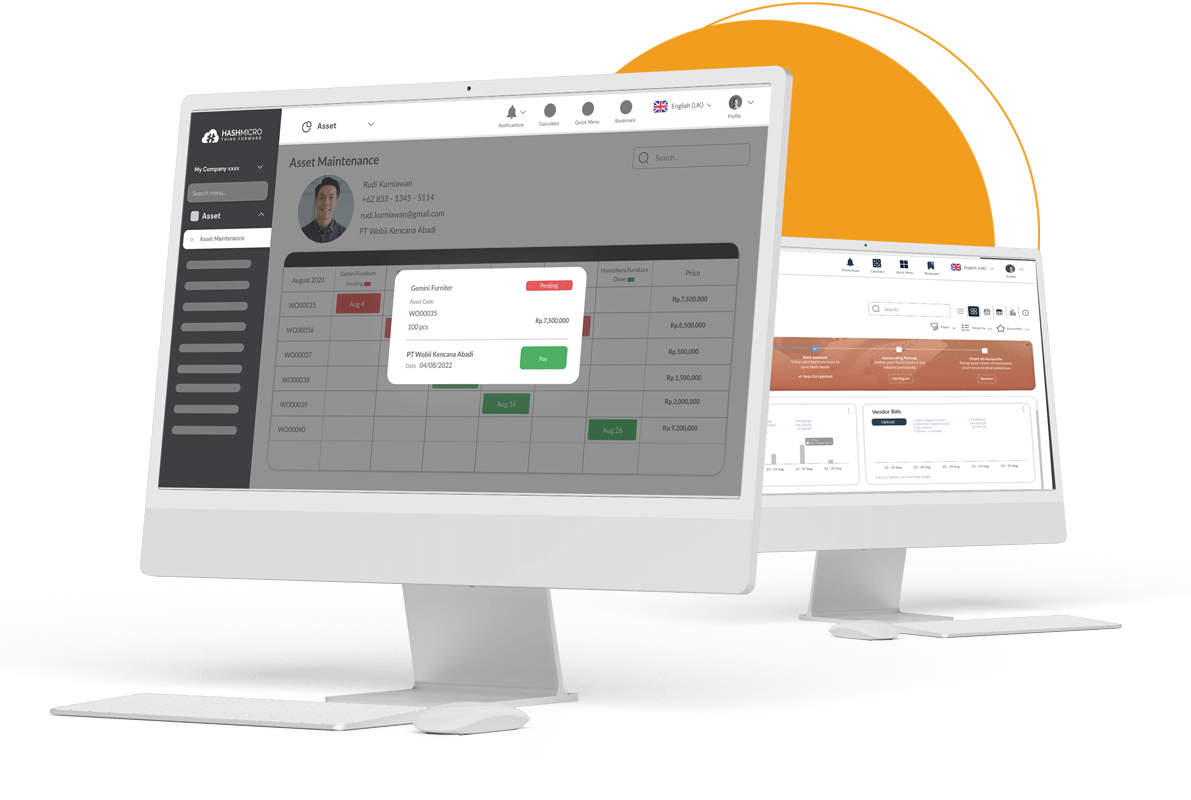Equipment management was proven to reduce company expenses by up to 20% in one study. Hay naku! That’s a fantastic number to save on operational budgets, diba? With that in mind, let’s get acquainted with equipment management.
As a business owner in the Philippines, you may have some or a lot of equipment to support your operations. Therefore, it is a must for entrepreneurs to manage their own equipment. Unfortunately, this process can no longer be done manually.
As a business owner, you have many important tasks like attending meetings and managing daily operations. That’s why using an asset management system to handle your equipment is essential. In this article, we will introduce effective equipment management and share tips for doing it efficiently.
Key Takeaways
|
What is Equipment Management?
Equipment management is the process of tracking, maintaining, and optimizing equipment use within an organization. It involves acquiring, using, and repairing equipment to enhance efficiency, reduce costs, and ensure safety throughout its lifecycle.
This management also involves routine inspections to minimize disruptions and ensure smooth operations. Furthermore, seamless coordination across departments is vital to maintaining efficiency and keeping equipment aligned with the organization’s operational schedule.
Examples of Equipment Management Systems You Should Know
 Equipment management examples can be found across various industries, ensuring smooth operations. For instance, heavy machinery like excavators and cranes are regularly maintained and tracked in construction to avoid costly downtime.
Equipment management examples can be found across various industries, ensuring smooth operations. For instance, heavy machinery like excavators and cranes are regularly maintained and tracked in construction to avoid costly downtime.
Similarly, healthcare facilities closely monitor medical devices through an asset management system, ensuring they are appropriately calibrated and sanitized for consistent use. Additionally, production line equipment is carefully managed in manufacturing, with scheduled maintenance and spare parts stocked to prevent interruptions.
Using an equipment management system helps ensure efficiency and prevent costly downtime. With asset management software, you can schedule maintenance, track usage, and do inventory monitoring equipment from anywhere. You can also explore flexible pricing schemes to determine how your budget fits.
Benefits of Using Equipment Management
Implementing an equipment management system brings significant advantages for businesses in various industries. Here are some of the key benefits of implementing a heavy equipment management:
- Increased efficiency: Streamline maintenance and reduce downtime, improving productivity.
- Cost savings: Perform regular upkeep to minimize repairs and extend equipment lifespan.
- Improved safety: Ensure all equipment meets safety standards, reducing accident risks.
- Better equipment tracking: Monitor equipment usage and location in real time.
- Data-driven decisions: Use real-time data to make informed decisions on upgrades and needs.
Tips to Enhance Equipment Management
There are at least 8 tips that you can follow for managing equipment. These tips help you achieve effective management and align with business goals. Here is the list:
- Schedule preventive maintenance regularly to avoid major breakdowns
- Use software by knowing asset management system recommendations first to track and monitor equipment effectively
- Train staff to use equipment properly and avoid mishandling
- Monitor equipment performance regularly to catch issues early
- Maintain a stock of essential spare parts for quick repairs
- Set clear equipment usage guidelines to prevent unnecessary wear
- Analyze equipment data to identify patterns and optimize operations
- Ensure timely updates and upgrades to keep equipment running efficiently
Transform Your Equipment Management with HashMicro’s Asset Management Software
 Gusto mo bang gamitin ang makabagong software para i-optimize ang equipment management? Kilalanin ang HashMicro, ang perpektong solusyon para sa mas epektibong operasyon ng iyong negosyo.
Gusto mo bang gamitin ang makabagong software para i-optimize ang equipment management? Kilalanin ang HashMicro, ang perpektong solusyon para sa mas epektibong operasyon ng iyong negosyo.
Established in 2015, HashMicro has become a favorite choice for thousands of companies, such as Brinks, Bank of China, and Changi Airport Singapore. Through its free demo of the equipment management software, HashMicro commiting to suppors businesses in the Philippines, including yours.
Still, why should you choose HashMicro over other asset management software? What benefits can you get by implementing the HashMicro system? Here are the reasons why HashMicro is superior and something you can trust.
The advantages of HashMicro that you can get:
- Unlimited users
- The user interface is easy to understand, so the learning steep of HashMicro is not high
- Comply with local regulations in the Philippines along with your company’s legacy systems
- The software is adaptive to technological developments and current trends
- HashMicro’s system scalability is flexible, making it easy to keep up with the growth of your business
- Easy to customize
- There is a free demo for every system offered for Filipino companies
- Integrates with other systems, such as ERP, accounting, and sales
- The implementation process of HashMicro’s asset management software is quick and ready for immediate use
Key features:
- Asset maintenance budget: Features to manage and track the maintenance budget for each asset or group of assets.
- Preventive maintenance scheduling: Easily create asset maintenance schedules to prevent unexpected operational disruptions, ensure that all assets remain in good working order, & extend asset life.
- Asset stocktake with barcode: Use barcodes to report asset status (breakdown, operative, missing, found, etc.) into the system.
- GPS equipment tracking: Track asset locations using GPS accurately and in real-time. This can increase the visibility of company assets’ locations.
- QR code scanning for facilities requests: QR code scanning feature installed in various facilities or equipment to submit repair or maintenance requests quickly and efficiently.
Conclusion
Effective equipment management is essential for improving efficiency, reducing costs, and ensuring safety within organizations. By doing equipment tracking, maintaining, and optimizing equipment usage, businesses can minimize downtime, extend asset lifespans, and make informed decisions.
Implementing an advanced asset management system such as HashMicro enhances these benefits by providing real-time monitoring, a free demo, streamlined maintenance scheduling, and seamless integration with existing processes. Therefore, choosing HashMicro can be your best business move.
FAQ About Equipment Management
-
What is the aim of equipment management?
Equipment management aims to efficiently oversee and maintain an organization’s physical assets to maximize performance, longevity, and cost-effectiveness. It supports operational excellence, enhances productivity, and reduces expenses by ensuring optimal operation and proactive maintenance.
-
Why is managing equipment important?
Managing equipment is essential to ensuring efficient operations, minimizing downtime, and reducing maintenance costs. Additionally, it prolongs the lifespan of assets, enhances workplace safety, and supports overall productivity within the organization.
-
How do you maintain your equipment?
Maintaining your equipment involves setting a regular schedule for inspections, cleaning, and repairs to keep everything working well. Management software is used to track how equipment is used and catch problems early. Train your staff to handle equipment correctly, keep spare parts available, and follow the manufacturer’s instructions. These steps help prevent damage, reduce downtime, and extend the life of your equipment, ensuring your operations run smoothly and efficiently.
{
“@context”: “https://schema.org”,
“@type”: “FAQPage”,
“mainEntity”: [{
“@type”: “Question”,
“name”: “What is the aim of equipment management?”,
“acceptedAnswer”: {
“@type”: “Answer”,
“text”: “Equipment management aims to efficiently oversee and maintain an organization’s physical assets to maximize performance, longevity, and cost-effectiveness. Equipment management supports operational excellence, enhances productivity, and reduces expenses by ensuring optimal operation and proactive maintenance.”
}
},{
“@type”: “Question”,
“name”: “Why is managing equipment important?”,
“acceptedAnswer”: {
“@type”: “Answer”,
“text”: “Managing equipment is essential to ensuring efficient operations, minimizing downtime, and reducing maintenance costs. Additionally, it prolongs the lifespan of assets, enhances workplace safety, and supports overall productivity within the organization.”
}
},{
“@type”: “Question”,
“name”: “How do you maintain your equipment?”,
“acceptedAnswer”: {
“@type”: “Answer”,
“text”: “Maintaining your equipment involves setting a regular schedule for inspections, cleaning, and repairs to keep everything working well. Management software is used to track how equipment is used and catch problems early. Train your staff to handle equipment correctly, keep spare parts available, and follow the manufacturer’s instructions. These steps help prevent damage, reduce downtime, and extend the life of your equipment, ensuring your operations run smoothly and efficiently.”
}
}]
}



































